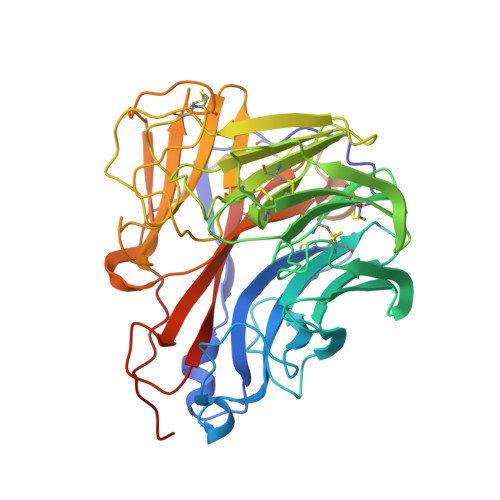Structural characterization of the 1918 influenza virus H1N1 neuraminidase
Xu, X., Zhu, X., Dwek, R.A., Stevens, J., Wilson, I.A.(2008) J Virol 82: 10493-10501
- PubMed: 18715929
- DOI: https://doi.org/10.1128/JVI.00959-08
- Primary Citation of Related Structures:
3B7E, 3BEQ - PubMed Abstract:
Influenza virus neuraminidase (NA) plays a crucial role in facilitating the spread of newly synthesized virus in the host and is an important target for controlling disease progression. The NA crystal structure from the 1918 "Spanish flu" (A/Brevig Mission/1/18 H1N1) and that of its complex with zanamivir (Relenza) at 1.65-A and 1.45-A resolutions, respectively, corroborated the successful expression of correctly folded NA tetramers in a baculovirus expression system. An additional cavity adjacent to the substrate-binding site is observed in N1, compared to N2 and N9 NAs, including H5N1. This cavity arises from an open conformation of the 150 loop (Gly147 to Asp151) and appears to be conserved among group 1 NAs (N1, N4, N5, and N8). It closes upon zanamivir binding. Three calcium sites were identified, including a novel site that may be conserved in N1 and N4. Thus, these high-resolution structures, combined with our recombinant expression system, provide new opportunities to augment the limited arsenal of therapeutics against influenza.
Organizational Affiliation:
Department of Molecular Biology, The Scripps Research Institute, La Jolla, California 92037, USA.



















